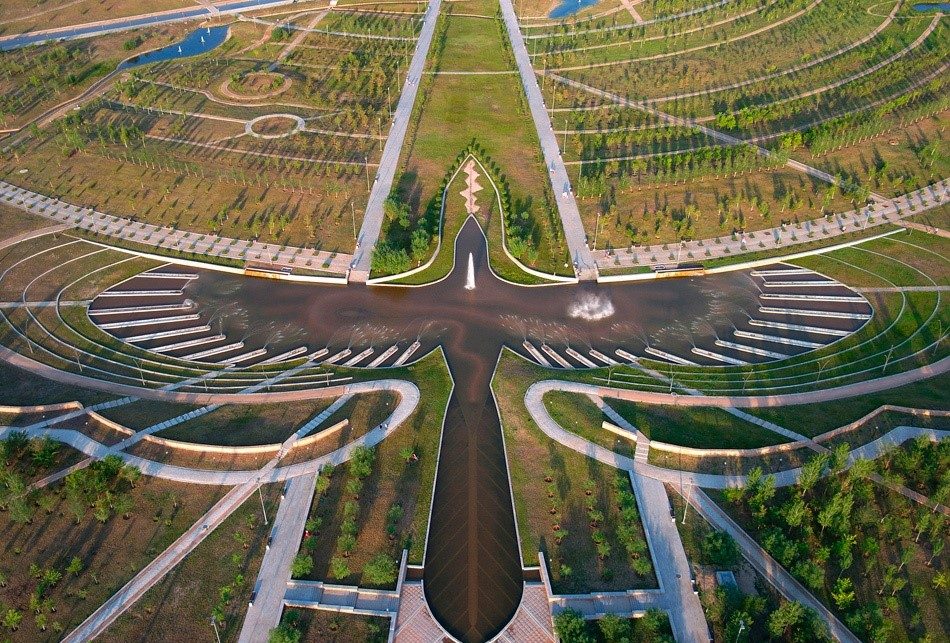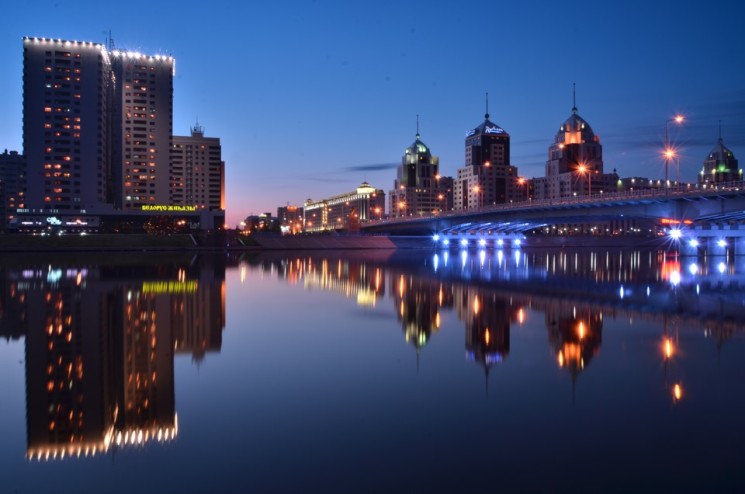Living in Nur-Sultan city
The idea of creating a new capital belongs to the President of the Republic of Kazakhstan Nursultan Nazarbayev.

The new capital was unveiled internationally on June 10, 1998. In 1999, Astana (now Nur-Sultan city) was awarded the title of the City of Peace by UNESCO. Since 2000, the capital city of Kazakhstan has been a member of the International Assembly of Capitals and Major Cities.

Nur-Sultan city is located in the center of Kazakhstan in the dry steppe zone and in the grass steppe subzone. The area of the city stands above the flood plain. The Ishim river is a major waterway of the capital. The city has an extreme continental climate with cold winter and hot dry summer.
At present, the territory of Nur-Sultan city makes up more than 722 square kilometers, its population size amounts to more than 1010000 people. The architectural concept of Astana is based on a peculiar Eurasian style reflecting the cultural traditions of both the East and the West. Kisho Kurokawa, a well-known Japanese architect, became the author of the capital’s general layout. The city consists of three districts – Almaty, Saryarka and Yessil.
Today Nur-Sultan is a city of new opportunities and the center of attraction of active and goal-oriented people. The capital of Kazakhstan is the main educational and scientific platform of the country and aspires to become a regional hub of knowledge, science, and innovations.
The cultural life of a young, in a historical context, the city is interesting and eventful. National and modern arts are harmoniously synthesized in its museums, theatres and concert halls.
City sightseeing
Bayterek
The monument “Bayterek” is one of the main attractions and an absolute symbol of Nur-Sultan city. In translation from the Kazakh language, its name means poplar tree. Bayterek symbolizes the state, which kept its historical roots and which has steady support and the aspiration for future prosperity.
On the mark of 97 m, there is a sight area from which a picturesque panorama of the present-day city opens up. The number 97 is not random, it symbolizes the year of transfer of capital from Almaty to Astana (now Nur-Sultan city). In the center of the panoramic hall, there is a wooden globe with 17 petals signed by 17 representatives of different world’s religions.

Water–Green Boulevard
Starting from Khan Shatyr and finishing near “Ak Orda” President’s Residence, this boulevard is probably the most beautiful pedestrian area for seeing interesting cityscapes. Fountains, piece of arts, restaurants, cafes, shopping – all of these you may find here.

National Museum of Kazakhstan
The National museum of Kazakhstan is the youngest and largest museum in Central Asia, composed of the following halls: Hall of Astana, Hall of Independent Kazakhstan, Hall of Gold, Hall of Ancient and Medieval History, Hall of History, Hall of Ethnography, Halls of Modern Art. The structure of the museum on studying the national heritage is represented by the Research Institute. There are also facilities for a children’s museum, children’s art center, two showrooms, restoration workshops, laboratories, professional depositories, a scientific library with a reading room, a conference hall and souvenir stalls.

Astana Opera House
Situated on the left bank of the river Ishim, the Astana Opera House is striking in its splendor. The building itself is 64,000 square meters. Of these, about 3,000 square meters is the stage area. The Astana Opera House impresses not only by its scale but also by its architectural refinement. It is constructed on the basis of the best classical architectural traditions and entwined therein are Kazakh national motifs. The main hall of the theatre is designed for 1,250 people, and the Chamber Hall can accommodate 250 people.

Palace of Peace and Reconciliation (Pyramid)
The Palace of Peace and Reconciliation is a symbol of friendship, unity, and peace in Kazakhstan. The author of the project is a famous British architect Lord Norman Foster. The Pyramid has a pure form, 62 meters high and 62 meters base. The top of the pyramid is decorated with a work of art by the artist Brian Clarke. It is a picture of 130 doves that symbolize 130 nationalities living in Kazakhstan. There are the Opera Hall with 1302 seats, party hall Atrium, Hall “Besyk”, exhibition halls, gallery “Kulanshi”, the press center, the ethnic cultural centers of Nur-Sultan city, the International Center of Cultures and Religions and the Academy of Turkic World.

Presidential Park
The Presidential Park that stretches out around the Palace of Peace and Reconciliation impresses with its original architecture. It is the largest park in Kazakhstan. In its territory, there are artificial springs, fountains and flower gardens. From above the park has a profile similar to the image of the fairy-tale bird Samruk, a symbol of independence and revival of Kazakhstan.

Ishim river embankment
In summer the embankment of Nur-Sultan city stretching for several kilometers along the Ishim river is a favorite recreation place of the residents and guests of the capital. At night you can enjoy a laser light show when laser beams are projected to a water screen create various images.

Culture and art
National museum of the Republic of Kazakhstan
- Address: 54 Tauelsizdik Ave.
- Tel.: +7 (7172) 919 035, 919 036
- Working hours: Tue – Sun 10:00 am – 6:00 pm
Museum of the First President of the Republic of Kazakhstan
- Address: 11 Beibitshilik Str.
- Tel.: +7 (7172) 751 214, 751 292
- Working hours: Tue – Sun 10:00 am – 6:00 pm
“ALZHIR” Museum-memorial complex of victims of political repressions and totalitarianism
- Address: Korgalzhyn highway, 37 km from Nur-Sultan city (Malinovka village)
- Tel.: +7 (7172) 499 455, 542 669
- Working hours: Tue – Sun 09:00 am – 6:00 pm
Museum of Military History
- Address: 1 Respublika Ave.
- Tel.: +7 (7172) 443 233, 443 276
“Atameken” map of Kazakhstan” Ethno-memorial complex
- Address: 2/1 Korgalzhyn highway
- Tel.: +7 (7172) 245 272, 240 497
“Kazakhstan” Central concert hall
- Address: 10/1 Mangilik Yel
- Tel.: +7 (7172) 705 256
- Address: 1 Dinmukhamed Kunaev Str.
- Tel.: +7 (7172) 709600, 709612
- Tickets can be purchased online at https://ticketon.kz/astanaopera
- Address: 9 Uly Dala Ave.
- Tel.: +7 (7172) 621 212
Kazakh Music and Drama Theatre named after K.Kuanyshbayev
- Address: 47 B Omarov Str.
- Tel.: +7 (7172) 323 624
State Academic Russian Drama Theatre named after M.Gorkiy
- Address: 11 Zheltoksan Str.
- Tel.: +7 (7172) 328 223
- Tickets can be purchased online at http://rtd.kz/ru/repertoire/
- Address: 10 Yessenberlin Str.
- Tel.: +7 (7172) 380 108
- Tickets can be purchased online at http://www.zhastar-theatre.kz/index.php/ru/kupit-bilet
- Address: 14 Kunayev Str.
- Tel.: +7 (7172) 508 465

